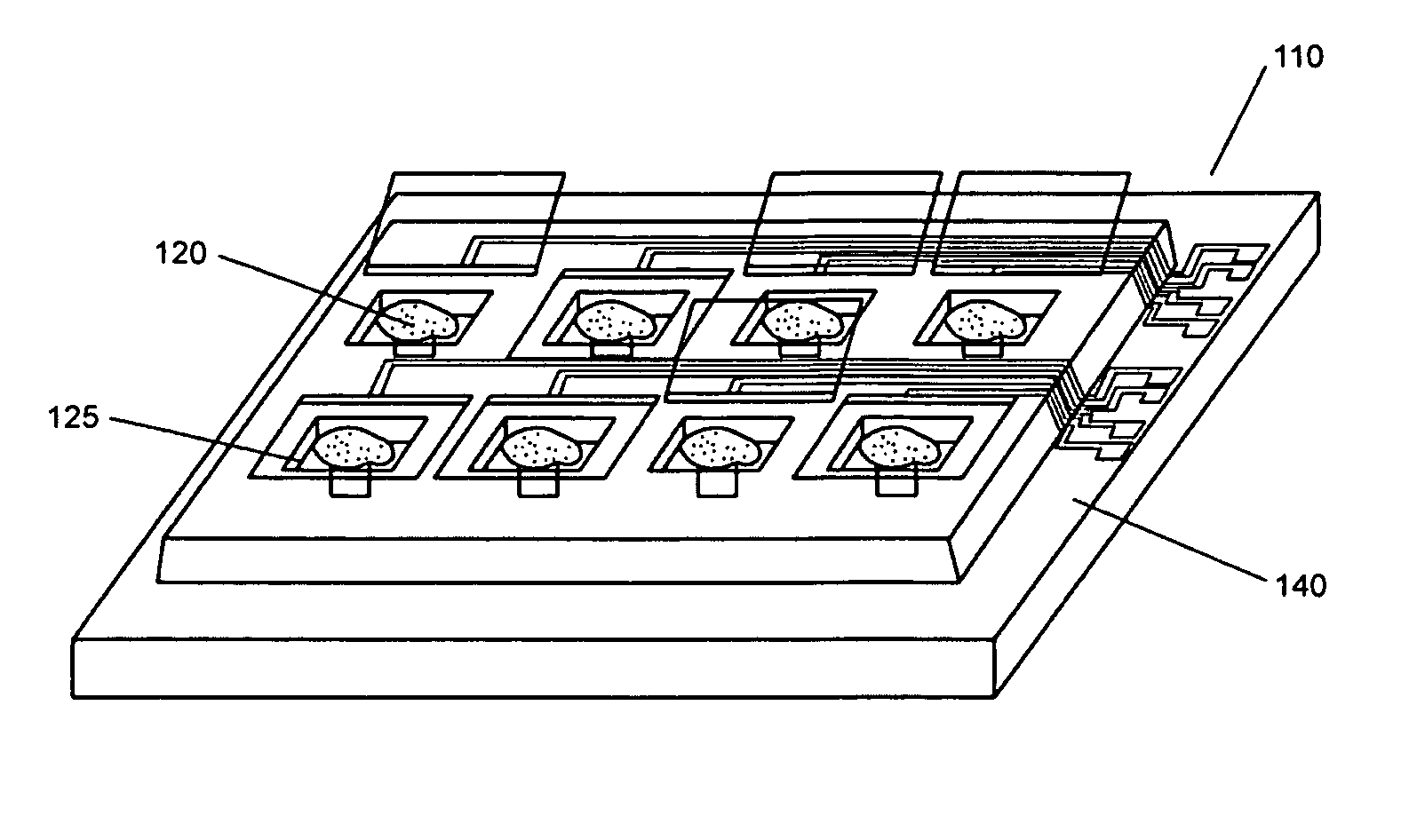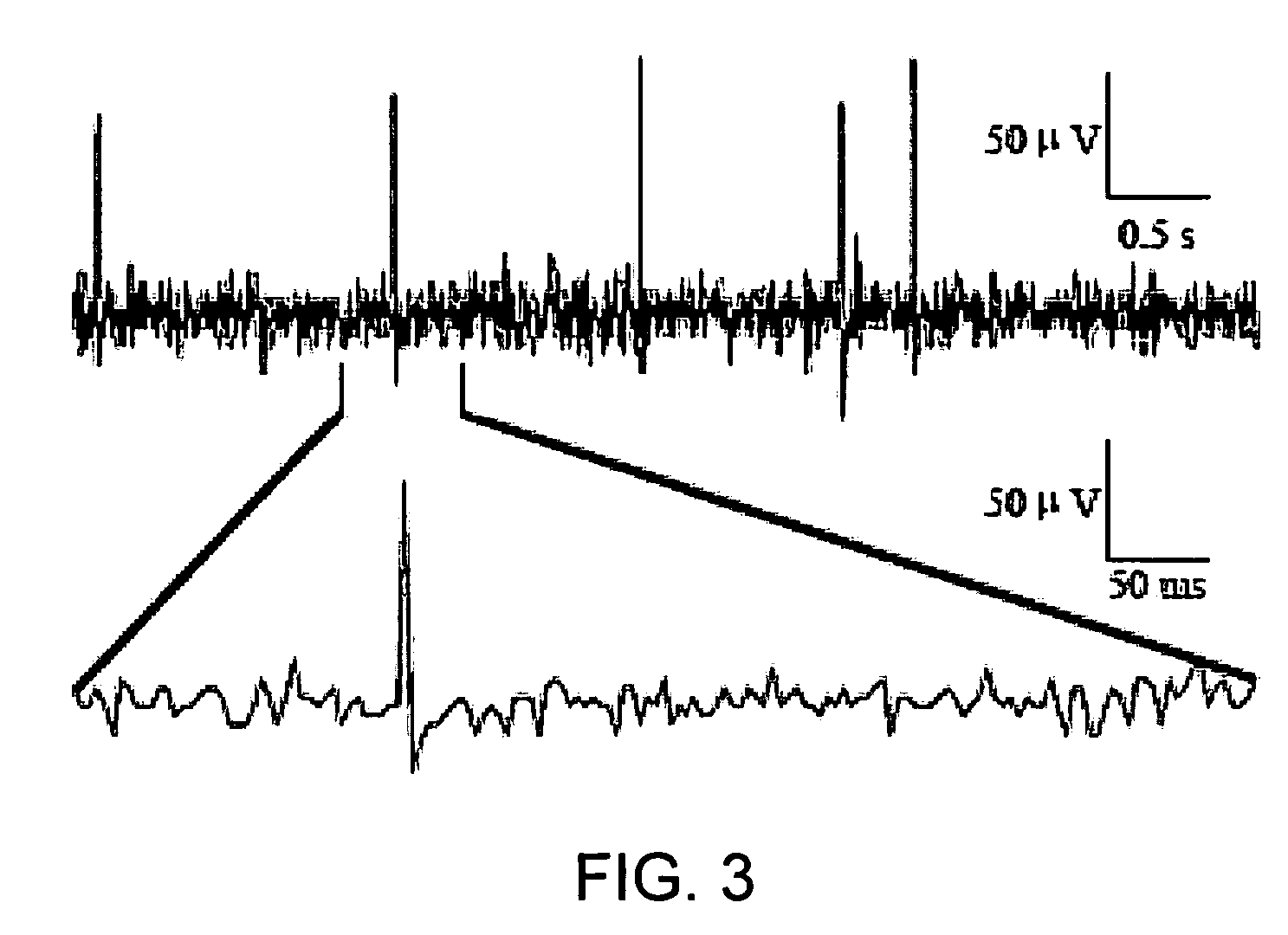Cell-based sensing: biological transduction of chemical stimuli to electrical signals (nose-on-a-chip)
a cell-based sensor and electrical signal technology, applied in the field of apparatuses for cell-based sensors, can solve the problems of many limitations in the system, limited usefulness of dogs, and limited working hours of dogs
- Summary
- Abstract
- Description
- Claims
- Application Information
AI Technical Summary
Benefits of technology
Problems solved by technology
Method used
Image
Examples
example 1
Integrating MEMS Structures and CMOS Circuits for Bioelectronic Interface with Single Cells (an Example of a Cell Clinic)
[0110]Microvials 100 μm×100 μm and 10 μm to 20 μm high were made of SU8 negative photoresist. The microvials were closed by SU-8 / gold lids that were positioned by bilayer polymer actuators of PPy and gold. The clinics were fabricated on silicon wafers with electrodes leading to the hinges and to the interior of the vials. These structures have also been fabricated on top of custom VLSI circuitry designed to record signals from the cells within individual vials. All fabrication steps are performed at low temperature and are compatible with post-processing of the fabricated silicon die.
[0111]Because cells can escape from even deep microvials, a lid is included that can be closed after loading the cells into the vials. PPy doped with dodecylbenezenesulfonate (PPy(DBS)) is deposited over a layer of gold, which acts as the electrode through which potentials are applied...
PUM
| Property | Measurement | Unit |
|---|---|---|
| temperature | aaaaa | aaaaa |
| height | aaaaa | aaaaa |
| depth | aaaaa | aaaaa |
Abstract
Description
Claims
Application Information
 Login to View More
Login to View More - R&D Engineer
- R&D Manager
- IP Professional
- Industry Leading Data Capabilities
- Powerful AI technology
- Patent DNA Extraction
Browse by: Latest US Patents, China's latest patents, Technical Efficacy Thesaurus, Application Domain, Technology Topic, Popular Technical Reports.
© 2024 PatSnap. All rights reserved.Legal|Privacy policy|Modern Slavery Act Transparency Statement|Sitemap|About US| Contact US: help@patsnap.com










